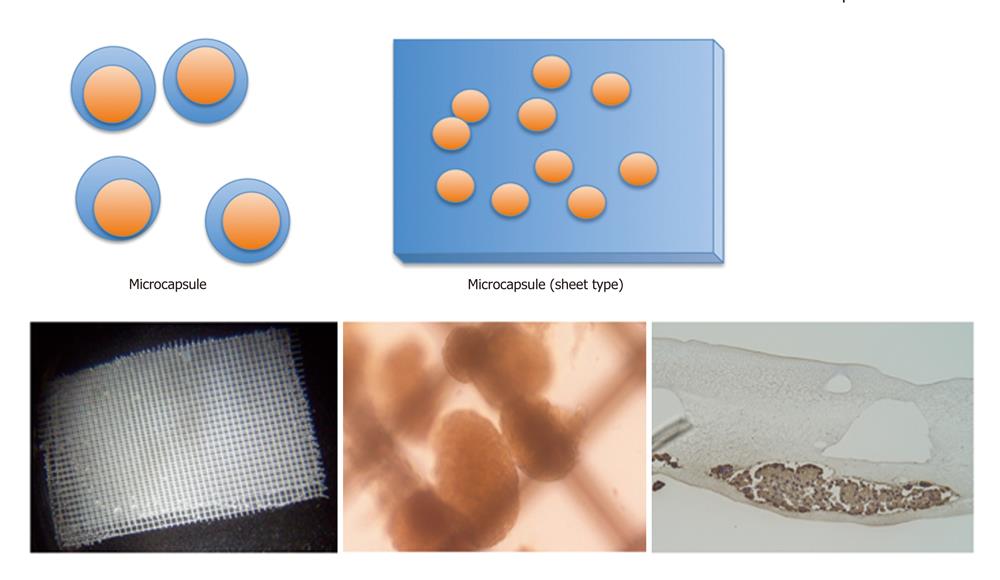Copyright
©2012 Baishideng Publishing Group Co.
World J Gastrointest Pathophysiol. Feb 15, 2012; 3(1): 19-26
Published online Feb 15, 2012. doi: 10.4291/wjgp.v3.i1.19
Published online Feb 15, 2012. doi: 10.4291/wjgp.v3.i1.19
Figure 2 Scheme of size of the encapsulated islets.
Encapsulated islets are classified into two types by the size: microcapsule (upper) and macrocapsule (lower). Microencapsulated islets are microcapsules containing a single or few islets. The microcapsule has some advantages in the transportation of oxygen and nutrients because of the smaller distance between the capsule surface and islet. The response to glucose change is better than that of a macrocapsule. The macrocapsule is a diffusion chamber containing a large amount of islets. Many shapes including rods, tubes or sheets (shown in the lower figure) are used for the macroencapsulation. One of the merits of a macrocapsule is the ease of implantation and removal with minimum risk when the device is infected. Left: Sheet type of polyvinyl alcohol macroencapsulated islets. Center: Inside of the macrocapsule. Intact islets are encapsulated in it. Right: Immunohistochemical staining of the macrocapsule for insulin. The islets in the macrocapsule are positive for insulin and viable.
- Citation: Sakata N, Sumi S, Yoshimatsu G, Goto M, Egawa S, Unno M. Encapsulated islets transplantation: Past, present and future. World J Gastrointest Pathophysiol 2012; 3(1): 19-26
- URL: https://www.wjgnet.com/2150-5330/full/v3/i1/19.htm
- DOI: https://dx.doi.org/10.4291/wjgp.v3.i1.19









